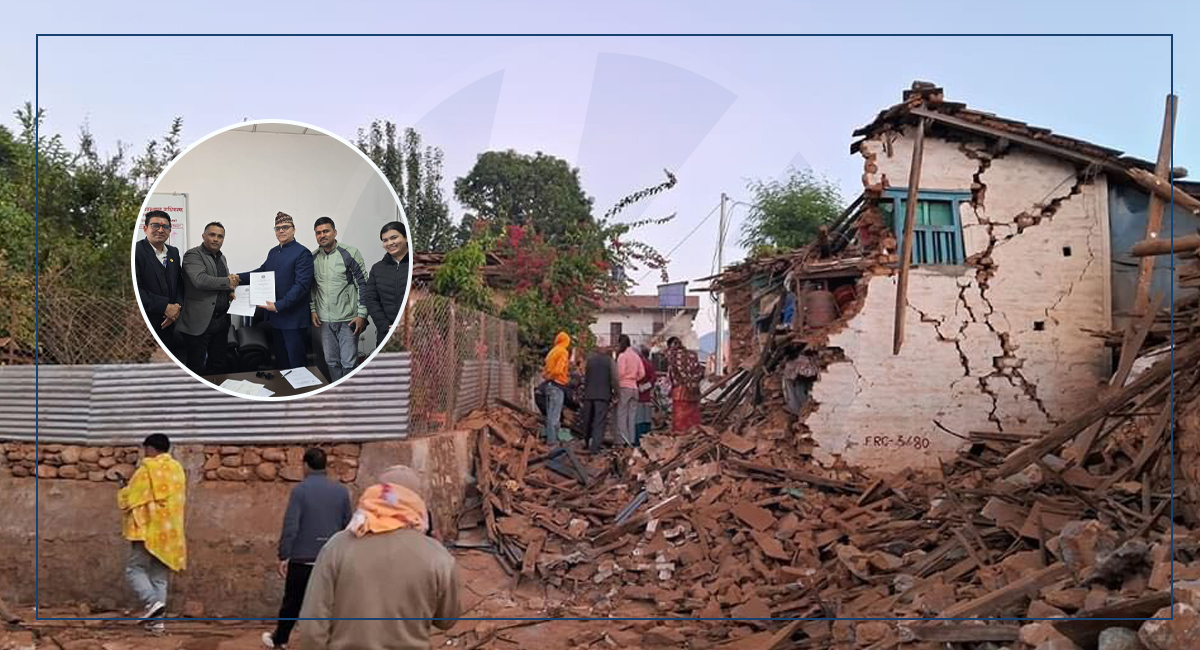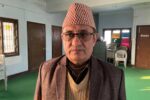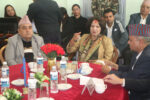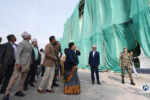SURKHET: It has been 15 months since the earthquake centered in Ramidanda, Jajarkot, struck on November 3, 2023.
The earthquake claimed 150 lives across Jajarkot and Rukum Paschim, injuring hundreds more.
The earthquake caused damage to 68,326 structures across Jajarkot, Rukum Paschim, and Salyan.
However, the National Disaster Risk Reduction and Management Authority (NDRRMA) did not immediately conduct a thorough assessment of the damage to community buildings and private houses.
The government’s lack of urgency in the post-earthquake reconstruction efforts, especially in Jajarkot, which suffered immense property and human losses, has delayed the construction of permanent housing.
Victims of the earthquake are still unable to rebuild their collapsed homes.
Now, the NDRRMA is preparing to begin a detailed damage assessment and reconstruction efforts for the Jajarkot earthquake.
A comprehensive evaluation of the damage will take place 15 months after the disaster.
This week (Monday), an agreement was signed between the Disaster Studies Center of the Institute of Engineering Studies, Tribhuvan University, and the Nepal Engineering Association (NEA) to conduct a detailed assessment of private houses damaged by the earthquake.
There is hope that this detailed assessment will finally support the earthquake victims, who have been struggling due to the lack of an approved criteria for distributing permanent housing grants.
According to the latest data on temporary housing construction, 68,326 families were affected by the Jajarkot earthquake.
Of these, 34,700 temporary houses have been built in Jajarkot, 32,376 in Rukum Paschim, and 1,350 in Salyan.
A Path to Reconstruction
A comprehensive damage assessment is crucial to determine whether all families who received financial aid for temporary housing are eligible for permanent housing reconstruction.
Chandra Prakash Gharti, Mayor of Jajarkot’s Bheri Municipality, stated that an agreement has been reached between the NEA and the Nepal Engineering Institute in Pulchowk to carry out the damage assessment.
“Until now, a detailed structural damage assessment has not been done. We had requested this assessment from the federal government and NEA,” said Gharti.
“Due to the lack of a timely assessment, reconstruction has not gained momentum.”
Mayor Gharti also mentioned that an agreement in principle has been made to study the damage in Bheri Municipality-1 and 3, the areas hardest hit by the earthquake. The assessment work will begin within a week.
Gharti added that 809 houses in Ward No. 1 and 495 houses in Ward No. 3 will undergo a detailed evaluation, after which decisions will be made regarding whether to repair, reinforce, or reconstruct them. Work will then proceed in other wards.
Provincial government’s efforts in rebuilding schools and health facilities
The Karnali Provincial Government has allocated funds to reconstruct schools and health institutions damaged by the earthquake.
The Ministry of Physical Infrastructure and Urban Development of the province has set aside a budget for the reconstruction of community schools and government health facilities affected by the earthquake.
The ministry announced that the reconstruction of these buildings will proceed as part of the approved annual program for the current fiscal year (2081/082).
According to the Earthquake-Damaged Building Reconstruction Program Operational Procedure, 2081, the Ministry of Physical Infrastructure and Urban Development has allocated funds to support the reconstruction of community schools and health institutions that have been recommended by district-level committees.
The Ministry of Urban Development has allocated 500 million rupees for the reconstruction of these buildings, with 250 million rupees earmarked for Jajarkot, 220 million rupees for Rukum Paschim, and 30 million rupees for Salyan.
The Cabinet meeting in Asoj last year approved the Earthquake-Damaged School and Health Institution Building Reconstruction Program (Operational and Management) Procedure, 2081 BS.
This procedure will be implemented in coordination with local governments and the provincial Ministry of Physical Infrastructure and Urban Development, as well as the infrastructure development office under its jurisdiction.
Sher Bahadur Tiruwa, an officer of the Planning and Monitoring Division of the Ministry of Urban Development, confirmed that the reconstruction process will be expanded based on the recommendations submitted to the ministry by the project recommendation committee.









Comment